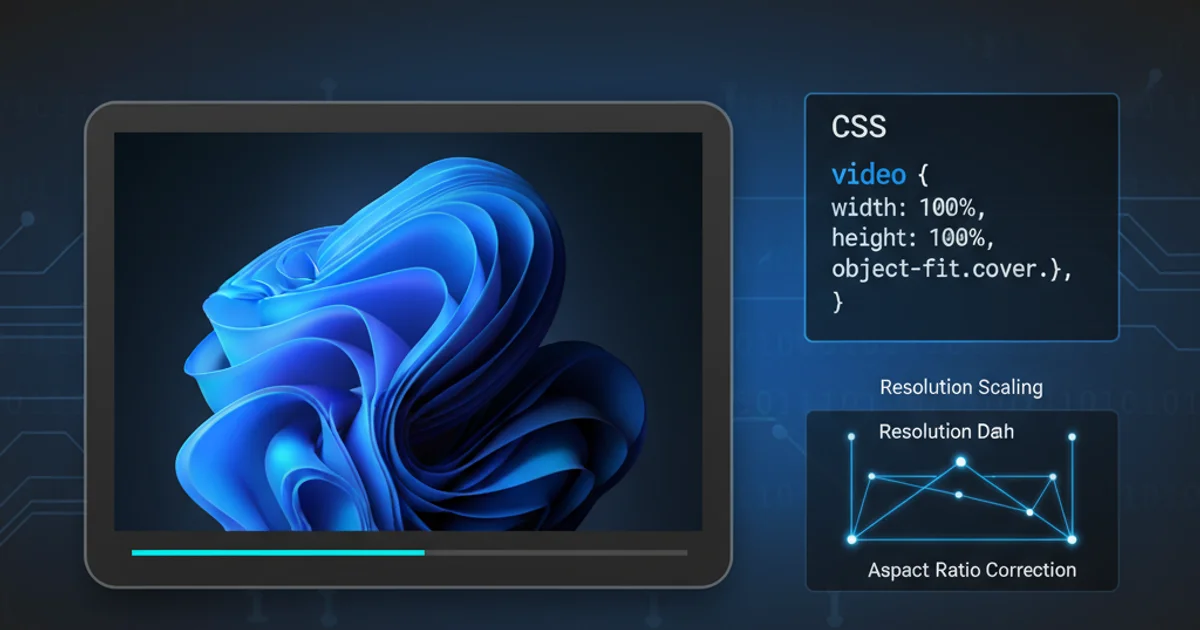Video player shows black border
Categories:
Eliminating Black Borders Around HTML5 Video Players

Learn common causes and effective CSS solutions to remove unwanted black borders or padding around your HTML5 video elements, ensuring a seamless visual experience.
Integrating video content into web pages is a common task, but sometimes developers encounter an annoying issue: black borders appearing around the video player. This often happens when the video's aspect ratio doesn't perfectly match the container, or due to default browser styles and CSS box model behaviors. This article will guide you through understanding why these borders appear and provide practical CSS techniques to eliminate them, ensuring your videos display cleanly and professionally.
Understanding the Root Cause of Black Borders
Black borders around video players typically stem from a few key areas. The most common is a mismatch between the video's intrinsic aspect ratio (e.g., 16:9, 4:3) and the dimensions of its HTML container. When the container's aspect ratio differs, the browser will often add black bars (letterboxing or pillarboxing) to fill the empty space, preserving the video's original proportions. Other factors include default browser margins/padding, or incorrect application of CSS properties like object-fit or overflow.
flowchart TD
A[Video Element] --> B{Container Aspect Ratio Match?}
B -- No --> C[Black Borders Appear]
B -- Yes --> D[No Borders]
C --> E{CSS `object-fit`?}
E -- Yes --> F[Video Fills Container]
E -- No --> G[Adjust Container/Video Dimensions]Flowchart illustrating the causes of black borders around video players.
Common CSS Solutions for Border Removal
Several CSS properties can be leveraged to tackle black borders. The most effective often involve controlling how the video content scales within its container. The object-fit property is particularly powerful for this, similar to how background-size works for background images. Additionally, ensuring the container itself doesn't introduce unwanted padding or margins is crucial.
video {
width: 100%;
height: 100%;
object-fit: cover; /* This is key! */
display: block; /* Removes extra space below inline elements */
}
Let's break down the CSS properties used above:
width: 100%;andheight: 100%;: These ensure the video element attempts to fill its parent container entirely.object-fit: cover;: This is the most critical property. It tells the video to fill the element's content box, maintaining its aspect ratio while cropping any content that overflows. This effectively removes black bars by allowing the video to 'overflow' its container and be clipped, rather than shrinking to fit.display: block;: HTML5 video elements are inline by default, which can sometimes introduce a small amount of extra space below them. Settingdisplay: block;removes this space, preventing a tiny border at the bottom.
Responsive Video with Aspect Ratio Box
For more complex responsive layouts where you want to maintain a specific aspect ratio for the video container itself (e.g., 16:9), you can use the 'padding-bottom' trick. This involves a wrapper div that uses percentage-based padding to create an intrinsic aspect ratio, and then absolutely positioning the video inside it.
<div class="video-container">
<video controls>
<source src="your-video.mp4" type="video/mp4">
Your browser does not support the video tag.
</video>
</div>
.video-container {
position: relative;
width: 100%;
padding-bottom: 56.25%; /* 16:9 aspect ratio (9 / 16 * 100%) */
height: 0;
overflow: hidden;
}
.video-container video {
position: absolute;
top: 0;
left: 0;
width: 100%;
height: 100%;
object-fit: cover; /* Ensures video fills the container */
}
In this setup, the .video-container maintains a 16:9 aspect ratio (56.25% padding-bottom). The video inside is then absolutely positioned to fill this container, and object-fit: cover; ensures it scales correctly without black bars, cropping if necessary.